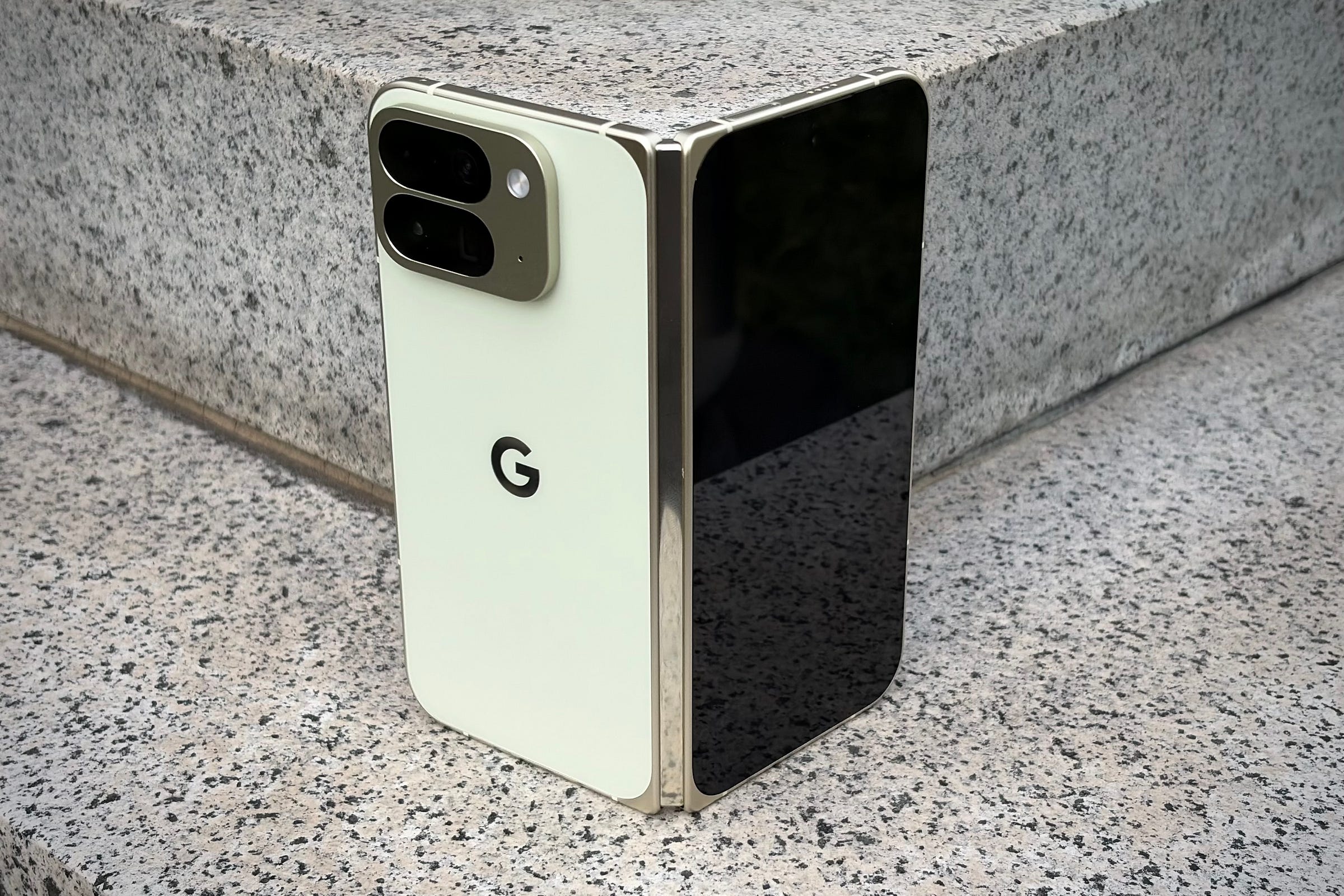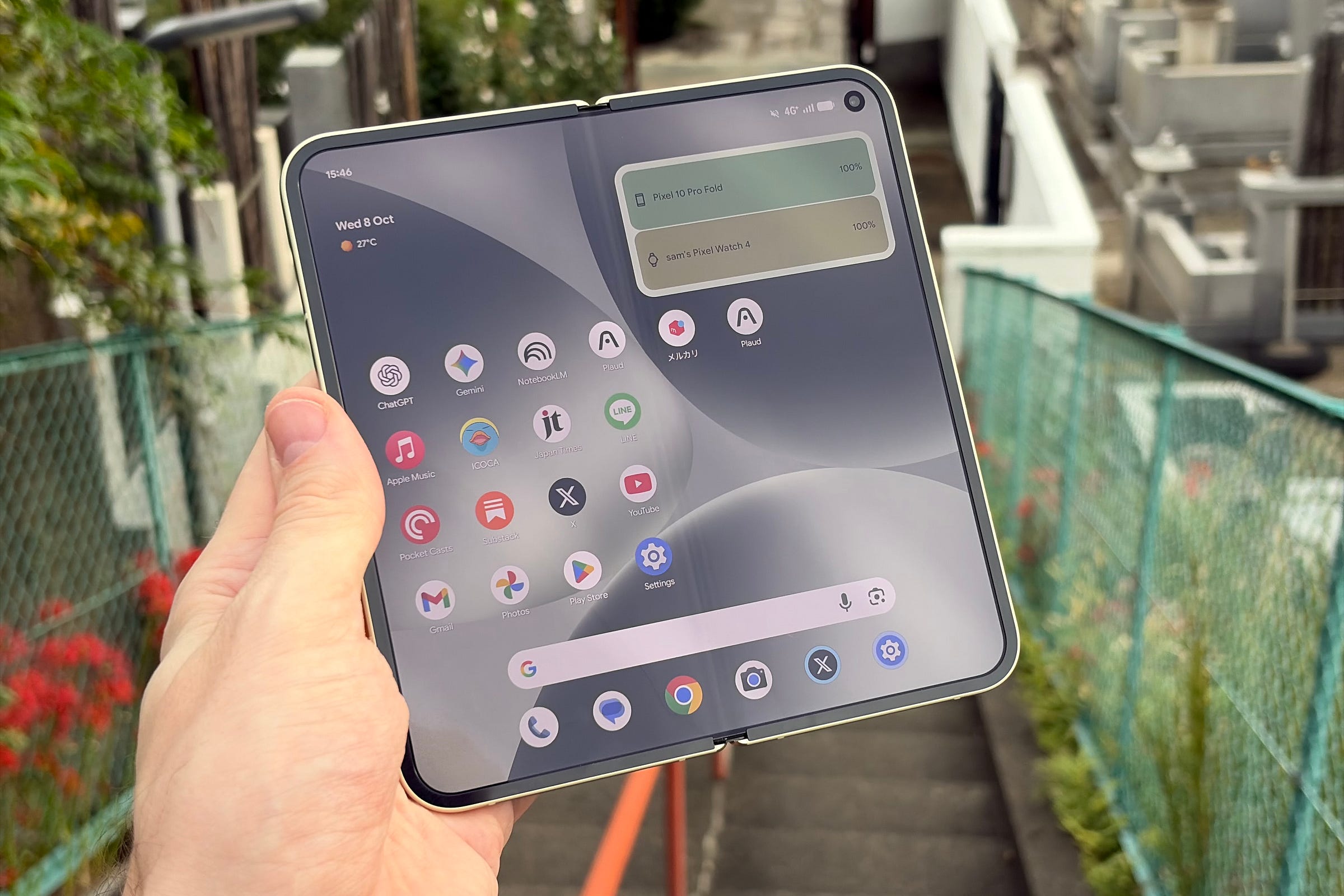Google Pixel 10 Pro Fold review: not jaded yet
A subtle update to an awesome phone
I was a big fan of last year’s Pixel 9 Pro Fold, noting the huge improvements Google made over the shaky original Pixel Fold and calling it “one of the best second attempts I’ve ever seen”. It ended up ranking as my favourite phone of 2024 overall for how it nailed the unique Pixel software experience on a new form factor.
Well, here we are in 2025 with the Pixel 10 Pro Fold. What’s changed? Not a whole lot, honestly, and I think Google is going to have to do something more dramatic next year in order to stay competitive.
But the 10 Pro Fold is clearly better than its predecessor, and there are much worse places to end up than “clearly better than my favourite phone of last year”.
The Pixel 10 Pro Fold looks nearly identical to last year’s model. The dimensions are very similar — it’s about a millimetre narrower when folded and a tenth of a millimetre thicker when unfolded, at 5.22mm.
The biggest visual difference is actually in the colourways, where Google has been relatively bold this year. The only two options are the blue-grey “moonstone” — the same finish as on the Pixel Watch 4 I’ve also been using — and the green-and-gold “jade”, which is what my review unit came in.
I wasn’t sure about jade at first but it’s grown on me; ultimately it’s a subtler look than you might expect in most lighting situations, but it’s more stylish than the “porcelain” (white) 9 Pro Fold I’m used to. Credit to Google for adopting a sense of adventure on its highest-end devices when it could have just shipped the usual black and white.
There have been some nips and tucks made around the 10 Pro Fold that make it feel a little more premium than its predecessor. It’s slightly narrower when folded, so the hinge sticks out less on the left, and the outer screen bezels have been slimmed down a little. I compared the 9 Pro Fold experience to using an A-series Pixel; this is more like a base 9 or 10.
But while this design was a big leap forward a year ago, it already feels quite dated. The 10 Pro Fold is perhaps unfortunate to have arrived so soon after the iPhone Air, which is what’s been in my other pocket the past couple of weeks, but competing 2025 foldables like the Oppo Find N5 are also much more convincing at acting like regular phones. The 10 Pro Fold is 10.8mm when folded, which is usable but undeniably chunky by today’s standards.
The outer screen has grown a tenth of an inch diagonally to 6.4”, thanks to the slimmer bezels, and peak brightness has increased by 300 nits to 3,000. The 8” inner screen is the same size as before but has received the same brightness boost. Both panels still look great and are even more usable outdoors than before.
Google is touting a new gear-free hinge design, which does feel smoother when opening the phone, with less tangible friction — at least when compared to a year-old 9 Pro Fold. It doesn’t seem to have made much difference to how the crease in the screen appears, though; it’s subtle but still there.
On the subject of durability, Google says this is the first foldable phone to have IP68 certification, meaning it should be dust-tight and able to be immersed in water. I’ve never actually run into that kind of issue in my years testing foldables, but I have felt a little nervous taking them to the beach, so this is a notable improvement that raises the bar on what we can and should expect from these devices.
And of course, the most welcome design upgrade this year is the same as on the Pixel 10 and 10 Pro: Pixelsnap, which is Google’s brand name for “we are the first to implement MagSafe-style Qi2 15W magnetic wireless charging in our Android phones.” I’ve been using the Pixel 10 Pro XL for six weeks now and let me tell you, it has broken me for other Android devices. What feels like a nice-to-have on these Pixels is quickly going to feel like a serious omission on competitors.
Those competitors, however, could fairly point out that Google is lagging behind on charging speeds. The Pixel 10 Pro Fold’s 5,015mAh battery fast-charges with a 30W or higher power brick and cable, good for a 50% charge in about half an hour. That’s a significant improvement over the interminable 21W top speed on the 9 Pro Fold, to be fair — and faster than the 25W max on the Samsung Galaxy Z Fold 7 — but Chinese phones are streets ahead in this regard.
One surprising tweak is that unlike the 9 Pro Fold, the new phone charges fine on Google’s discontinued second-generation Pixel Stand. I’m sure that’s not the reason Google moved the charging coil around, but as someone who still has that stand on my desk, it’s a welcome change.
Battery life has been pretty good for me, and the Tensor G5 chip is serviceable for what I’ve been using it for. As ever, you kind of have to take Google’s word for it that it’s enabling better efficiency in new AI features at the expense of traditional gaming performance. It isn’t going to win many benchmarks, but it does run cooler than every previous Tensor chip in my experience.
Google says the 10 Pro Fold has a new main camera but honestly, I’m not quite sure what’s new about it: it’s still a 1/2” 48-megapixel sensor with an f/1.7 lens, just like the 9 Pro Fold and the Pixel 10. The same goes for the 1/3.2” f/3.1 10.8-megapixel 5x telephoto, which is also the same on the other two phones. And the ultrawide is still a 1/3.4” f/2.2 10.5-megapixel module, though the Pixel 10’s is slightly larger and higher resolution.
Basically, this is a very similar camera setup to the Pixel 10, which is to say it’s fine for a mid-range phone and capable enough of pulling off the Pixel look, though it falls apart a little in challenging situations. On a $1,800 device, it’s somewhat less impressive — though of course there are space considerations to take into account with foldables.









On the software side, the 10 Pro Fold inherits the 10 Pro’s artificially gated “Pro” controls, as well as the new Camera Coach mode. It still doesn’t have Action Pan, for reasons that elude me, and digital zoom only goes up to the same 20x as on the Pixel 10. But otherwise this is the same software offering you’ll find on the other Pro phones, plus some foldable-specific features like letting your subject preview your shot on the outer screen.
The basic software experience has not changed too much year on year, save for the switch to the new Material 3 Expressive visual design. That is actually a pretty serious glow-up, but it isn’t surprising coming from the Pixel 10 Pro XL.
Things like multitasking and notifications mostly work the same way they did on the 9 Pro Fold, and all the Pixel-specific AI and language features are still here — they just often look better. There is a handy new multitasking ability that lets you keep a sliver of an app at the very edge of the screen for easy switching, which works similar to Oppo’s system.
The Pixel 10 Pro Fold is great. In many ways, I like using it more than any other phone. That was true of the 9 Pro Fold for much of the past year, and it’s true of its successor.
The Pixel software experience is simple and clean — even more so with Material 3 Expressive — and has a bunch of built-in features that I rely on all the time. No phone does a better job of integrating AI into its operating system, particularly when it comes to anything to do with language and translation.
But the 10 Pro Fold is not quite the proposition its predecessor was a year ago. Back then, Google did at least have a clear advantage over Samsung. But today, it’s hard to ignore competing foldable phones with better hardware and wonder what might have been. This is ultimately a slight revision to a year-old phone in a form factor where technical advances can still make a big difference.
When I reviewed the Oppo Find N5 early this year, I wrote that I didn’t think that foldable hardware could get much better. I think that’s still probably true, and so that should be a reasonable target for Google to hit with the 11 Pro Fold. For now, this year’s model feels like a slightly clunky device that still offers something incomparable.







